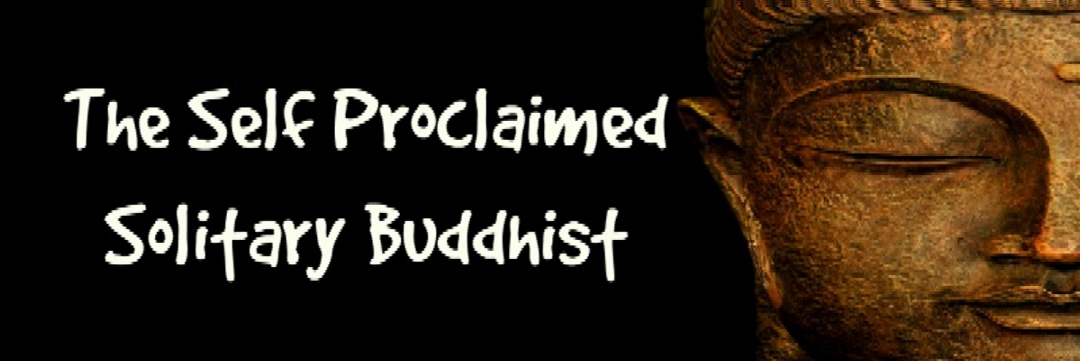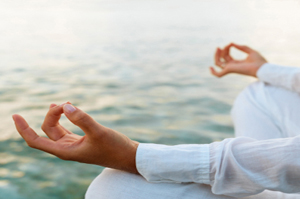“...when you find that anything agrees with reason and is conducive to the good and the benefit of one and all, then accept it and live up to it.”
- Attributed to BUDDHA
A Summary of Buddha's Teaching
The vastness of the Buddha's Teachings can be a bit overwhelming, especially for the Solitary Practitioner. I have outlined what I think are the basics of what I have discovered on my path to learn the Dharma. When things begin to be a bit overwhelming, I return to the basics. I hope this benefits you in some way.
Buddha set forth his teaching in the following doctrine;
 The Four Noble Truths:
The Four Noble Truths:
1. All things and experiences are marked by suffering/ disharmony/ frustration (dukkha).
2. The arising of suffering/ disharmony/ frustration comes from desire/ craving/ clinging.
3. To achieve the cessation or end of suffering/ disharmony/ frustration, let go of desire/ craving/ clinging.
4. The way to achieve the end of suffering/ disharmony/ frustration, is walking the Eightfold Path.
 The Eightfold Path to the end of suffering:
The Eightfold Path to the end of suffering:
1. Right Understanding of the following facts:
• the truth about suffering ... (The Four Truths);
• everything is impermanent and changes;
• there is no separate individual self- this is an illusion. (We are one!)
2. Right Determination to:
• give up what is wrong and evil;
• undertake what is good;
• abandon thoughts that have to do with bringing suffering to any conscious being; cultivate thoughts of loving kindness, that are based on caring about others' suffering, and sympathetic joy in others' happiness.
3. Right Speech:
• Abstain from telling lies.
• Abstain from talk that brings harm or discredit to others (such as backbiting or slander) or talk that creates hatred or disharmony between individuals and groups.
• Abstain from harsh, rude, impolite, malicious, or abusive language.
• Abstain from idle, useless, and foolish babble and gossip. Abstain from recrimination and negative statements.
• Abstain from harsh speech—practice kindly speech.
• Abstain from frivolous speech—practice meaningful speech.
• Abstain from slanderous speech—practice harmonious speech.
• Speak the truth if it is useful and timely. Practice only necessary speech. Let your speech be filled with loving kindness. Speak that which alleviates suffering.
4. Right Action:
• Peaceful, honorable conduct; abstain from dishonest dealings; take concrete steps necessary to foster what is good.
• Do things that are moral, honest, and alleviate suffering. Do not do things that will bring suffering to others or yourself.
5. Right Livelihood:
• Abstain from making your living from an occupation that brings harm and suffering to humans or animals, or diminish their well being. This includes: activities that directly harm conscious beings, and activities that indirectly harm sentient beings, e.g., making weapons or poisons.
6. Right Effort:
• Foster good and prevent evil;
• Work on yourself—be engaged in appropriate self-improvement. The essence of right effort is that everything must be done with a sense of proper balance that fits the situation. Effort should be balanced between trying too hard and not trying hard enough. For example, strike the balance between excessive fasting and over-indulgence in food. Trying hard to progress too rapidly gets poor results, as does not trying hard enough.
7. Right Mindfulness or wakefulness:
• Foster right attention.
• Avoid whatever clouds our mental awareness (e.g., drugs).
• Systematically and intentionally develop awareness.
8. Right Concentration:
• Developed by practicing meditation and/or mental focusing. Proper meditation must be done continuously while awake, and should include work on awareness of body, emotions, thought, and mind objects.
 Five basic precepts:
Five basic precepts:
1. Abstain from killing living beings (from destroying/taking life)—or practice love.
2. Abstain from taking the not-given (from stealing)—or practice generosity, practice giving.
3. Abstain from sexual misconduct—or practice contentment.
4. Abstain from false speech (from lying)—or practice truthfulness.
5. Abstain from taking intoxicating drinks—or practice awareness and mental clarity.
Buddha said:
Do not believe in anything simply because you have heard it. Do not believe in traditions because they have been handed down for many generations. Do not believe anything because it is spoken and rumored by many. Do not believe in anything because it is written in your religious books. Do not believe in anything merely on the authority of your teachers and elders. But after observation and analysis, when you find that anything agrees with reason and is conducive to the good and the benefit of one and all, then accept it and live up to it.
The following prose, attributed to Buddha, expresses the way he perceived the world.
Buddha said:
• I consider the positions of kings and rulers as that of dust motes.
• I observe treasures of gold and gems as so many bricks and pebbles.
• I look upon the finest silken robes as tattered rags.
• I see myriad worlds of the universe as small seeds of fruit, and the greatest lake in India as a drop of oil upon my foot.
• I perceive the teachings of the world as the illusions of magicians.
• I discern the highest conception of emancipation as a golden brocade in a dream, and view the holy path of the illuminated ones as flowers appearing in one's eyes.
• I see meditation as a pillar of a mountain, nirvana as a nightmare of daytime.
• I look upon the judgments of right and wrong as the serpentine dance of a dragon, and the rise and fall of belief as traces left by the four seasons.
 A really good book that covers the basics and more
A really good book that covers the basics and more
A Beginner's Guide to Tibetan Buddhism: Notes from a Practitioner's Journey by Lama Bruce Newman. The author takes the beginner by the hand to walk through the intricacies of the
path, making complex ideas and terminology plain and simple. A solid,
down-to-earth book.











